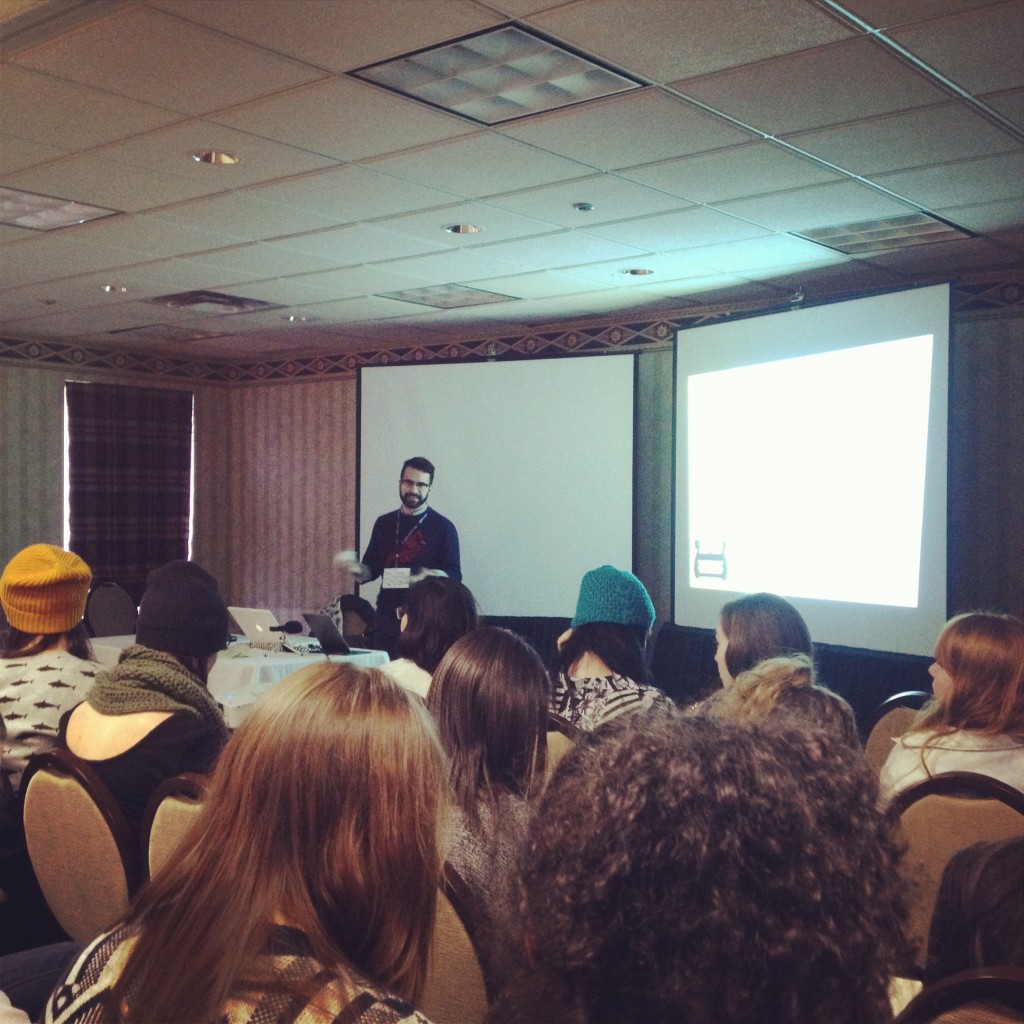Omar Mouallem advises budding freelancers at NASH
by Allison Leonard
“There is a science to pitching freelance magazine articles,” said Omar Mouallem, a freelance magazine writer and editor who has contributed to publications including the Globe and Mail, The Walrus and Alberta Views.
Last weekend, Mouallem spoke to delegates at the Canadian University Press’s annual national conference, NASH 76, in Edmonton. As part of the conference’s theme, “Mash Up,” many speakers addressed the business behind the words – how to pitch, promote and manage oneself as a journalist.
Mouallem’s session, “Pitch Perfect” broke down the magazine pitch into three integral parts: the research, the letter itself, and the response.
The research
During his session, Mouallem recalled a pitch he had made to a magazine about the Amazon only to receive rejection. He later found out that the magazine had published a feature just one month earlier about the very same topic – know the publication you’re pitching to. Mouallem suggests a few questions to ensure your content is unique while not off subject and relevant while not repetitive.
• What does this magazine publish?
• What don’t they publish?
• Does it have a theme?
• Are the themes recurring?
• Who is their audience?
• Who writes their stories?
The letter
Mouallem defies the bare-bones pitch taught in j-schools. His tone, tense and first-person writing style are found in the first paragraph. Content of the article, universality of the topic and sources follow.
“You’re not just pitching a story, you’re pitching yourself,” said Mouallem. “Pitch why you’re the right person to write the story, why you’re an expert, why you have specialized knowledge.”
The tone of a pitch should convey the writer, not a long-winded introduction.
“If you have to introduce yourself, keep it very short. Long introductions are a hallmark of amateurism,” said Mouallem. “And leave credentials to the end. Even without the best clippings, by the end of an awesome pitch, this may not matter.”
Mouallem lists tips for starting journalists pitching to a number of markets:
• Pitch a story with a headline
• Suggest ideas for sidebars, infographics, etc.
• Pitch digital content
• Spell check, but never resend if you’ve made a mistake
• If you’ve got superlatives, use them
Hit send and wait
Every writer experiences post-pitch, inbox-refreshing madness, hopeful they will receive a response. Mouallem advised delegates on etiquette and best practice for sending a pitch and waiting for a response:
• Do read the submission guidelines.
• Do send directly to the editor.
• Consider sending an introductory pitch.
• Do touch base in two to four weeks if you have yet to receive a response.
• Do not CC multiple editors.
• Do not send to multiple magazines, instead follow up with an email noting that you can hold the article if being considered.
Mouallem’s insider tricks to magazine pitching concluded with the importance of the story. Even the strongest pitch won’t make up for poor research or substandard writing.
“A great magazine story is always a great story. Try to write something that can be picked up in a dentist’s office years later and still be enjoyed.”
Other resources for pitching stories, as suggested by Mouallem include Jennifer Kahn’s five paragraph pitch and whopays.tumblr.com, a website noting which outlets pay and how much.
Allison Leonard did her undergrad in Journalism and Contemporary Studies at Laurier’s Brantford campus, and is now the president and publisher of WLU Student Publications, an autonomous, non-profit media organization. Leonard also serves CUP as the Communications Manager and as NASH’s Communication Coordinator. You can follow her on Twitter at @AllisonMLeonard.




